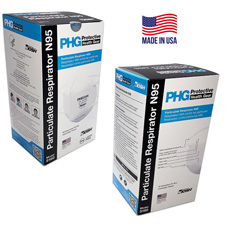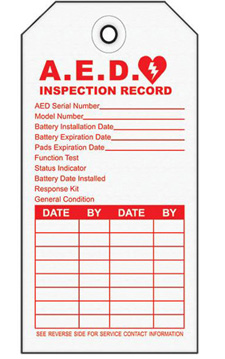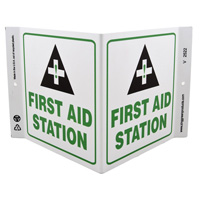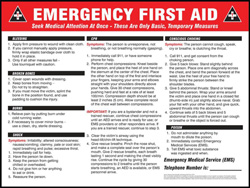| The Home page of ILPI's Safety Data Sheet (SDS) Resource, the leader in SDS information since 1995! | |
| The history and philosophy behind this resource. | |
| A curated collection of books and reference materials concerning Safety Data Sheets and closely related topics. | |
| Paste your plain text SDS into the SDS-Demystifier, and it will be converted into a hypertext-enriched document with links to detailed explanations of each key term. | |
| An extensive list of frequently asked questions about Safety Data Sheets including regulations, content, compliance, and more. | |
| A humorous take on Safety Data Sheet jargon. Fill in the blanks on our entry form to generate a personalized Unsafety Data Sheet to share with your coworkers. | |
| Since 1995, we've maintained this massive curated list of the best places to find Safety Data Sheets on the Internet. | |
| You are here! Way more than a glossary, this hypertext-enhanced resource covers hundreds of SDS-related terms and expert knowledge. Each entry includes both the SDS relevance and links to additional authoritative resources. | |
| Archived results of Safety Data Sheet related polls taken by some of our millions of site visitors | |
| The OSHA regulations behind SDS regulations, including the inspection guidelines and over 400 official interpretations letters under the Hazard Communication Standard | |
| Commercial suppliers of SDS authoring and management software as well as cloud compliance services. | |
| Commercial companies that will create SDS's for your specific needs as well as SDS translation companies. |

Safety signs, banners, and scoreboards? Get yours at Safety Emporium!
Definition

Get your PPE such as made in USA NIOSH-approved N95 masks from Safety Emporium.
- Hypertension is higher than normal blood pressure. Readings higher than 140/90 or 130/80 mm Hg are considered high. Chronic high blood pressure is likely to induce cardiovascular (heart and circulatory system) damage and or other adverse consequences such as stroke.
- Prehypertension is typically defined as blood pressure between 120/80 mm Hg and 139/89 mm Hg and is the intermediate case between normal and high blood pressure.
- Normal blood pressure for adults is generally in the range of 90/50 to 120/90 mm Hg .
- Hypotension is an abnormally low blood pressure, usually below 90/50 mm Hg. In severe or prolonged cases, it can be a serious medical condition.
Systolic blood pressure is the force exerted when your heart beats and diastolic blood pressure is the force when your heart is resting between beats. Blood pressure is expressed as systolic "over" diastolic and is written with a slash; for example 132/70 means the systolic reading is 132 and diastolic reading is 70 mm Hg.
Additional Info
Your heart is a pump that contracts and relaxes to force blood through your arteries to all parts of your body. Blood pressure is the force of the blood against the walls of the arteries. Too high of a pressure can cause long-term damage and too low of a pressure will not provide sufficient blood flow. Just as you have a pressure gauge on your car to make sure it is operating in the proper range, so should you keep track of your blood pressure to ensure your body is, too.
Elevated blood pressure is disturbingly common. Between 1 in 3 and 1 in 4 people have hypertension. Incidence of hypertension is significantly higher in African-Americans than in other racial groups. The chances of developing hypertension are increased for individuals who:

Get your AED signs, tags, and other first aid products from Safety Emporium.
- are overweight
- have a family history of hypertension
- are men over 45 and women over 55
- have prehypertension
- consume too much salt
- consume too much alcohol
- do not exercise
- do not consume enough potassium
- take certain medications
- have chronic high levels of stress
Hypertension can also be caused by a variety of other medical conditions. These cases are referred to as secondary hypertension. In other cases, there is no known cause (idiopathic) and the condition is sometimes called essential hypertension.
Adverse consequences of chronic hypertension may include.
- Retinal vascular damage. Blood vessels in the eye may burst and bleed, sometimes resulting in blindness.
- Cerebrovascular disease and stroke due to "hardening" or damage to the blood vessels in your brain.
- Left ventricular hypertrophy (enlarged heart), possibly leading to heart failure.
- Myocardial infarction (heart attack).
- Aneurysm (a weakened area in a blood vessel). Rupture of an aneurysm can lead to a stroke or death.
- Renovascular disease. Blood vessels in the kidney may narrow or block completely, ultimately leading to kidney failure.
Uncomplicated hypertension generally has no symptoms, so it is usually diagnosed through regular medical check-ups. Elevated blood pressure over several successive visits yields a diagnosis of hypertension or prehypertension. Prehypertension should be taken seriously as it can often progress to hypertension if the risk factors are not controlled.
To prevent or reduce (pre)hypertension, doctors generally recommend an improved diet, regular exercise, and, if applicable, losing weight or quitting smoking. Diets rich in fruits, vegetables, fat-free dairy foods, and low in fat and sodium tend to lower blood pressure. Limiting consumption of alcohol can also help lower blood pressure, however moderate alcohol use has certain cardiovascular (heart and circulatory system) benefits.
When these lifestyle changes are not sufficient to control hypertension, prescription medication is usually required. There are many different classes of antihypertensive medications, each working by a different mechanism. For example, diuretics such as hydrochlorothiazide are a cheap and effective drug for many people. While diuretics can help lower blood pressure by removing salt and extra fluid from the body, the actual mechanism of how they reduce blood pressure is not fully understood.
Other antihypertensives work by slowing the heartbeat down or relaxing and widening the blood vessels. Medications that work in this way include: beta blockers, alpha blockers, ACE inhibitors, ARBS, calcium channel blockers, alpha-beta blockers, nervous system inhibitors, and vasodilators. In some cases, combinations of two or more antihypertensives may be required to bring your blood pressure under control.
Books Available

We have all kinds of safety wall signs at Safety Emporium.
NOTE: We may collect a share of sales or other compensation from the links in the following list:
- "High Blood Pressure for Dummies", paperback, 360 pages, 2007. Estimated price $15.48 Info and/or order.
- "Clinical Management of Hypertension, 9th Edition", paperback, 336 pages, 2013. Estimated price $29.95. Info and/or order.
- "Kaplan's Clinical Hypertension Eleventh Edition", hardcover, 461 pages, 2014. Estimated price $74.07. Info and/or order.
- "Pulmonary Hypertension: Basic Science to Clinical Medicine", hardcover, 371 pages, 2015. Estimated price $124.72. Info and/or order.
- "Secondary Hypertension: Screening, Diagnosis and Treatment", hardcover, 778 pages, 2020. Estimated price $151.26. Info and/or order.
- "Interventional Therapies for Secondary and Essential Hypertension (Updates in Hypertension and Cardiovascular Protection)", hardcover, 363 pages, 2016. Estimated price $128.93. Info and/or order.
- "Current Essentials of Diagnosis & Treatment in Nephrology & Hypertension", paperback, 304 pages, 2012. Estimated price $43.00. Info and/or order.
- "Thirty Days to Natural Blood Pressure Control: The "No Pressure" Solution", paperback, 440 pages, 2016. Estimated price $14.99. Info and/or order.
SDS Relevance
Exposure to some chemicals, such as nephrotoxins, can cause or aggravate hypertension. Exposure to other chemicals may cause a victim to go into shock, a symptom of which is very low blood pressure.
Consult Section 11 (Toxicological information) of your Safety Data Sheets to identify the health effects of the materials you work with as well as Section 8 (Exposure controls/personal protection). Use engineering controls and/or personal protective equipment to reduce your exposure.
Further Reading

We have all kinds of first aid signs, posters and labels at Safety Emporium.
- The National Heart, Lung and Blood Institute gives easy to read information about the signs and symptoms of hypertension, its causes and treatments and more.
- High blood pressure (Hypertension) at the NIH's Medline Plus Medical Encyclopedia.
- Hypertension/High Blood Pressure Health Center at WebMD.
- Hypertension: Clinical Guidance and Practice Resources at the American Academy of Family Physicians.
- High blood pressure (hypertension) at the Mayo Clinic.
- Health Threats From High Blood Pressure at the American Heart Association. See their risk calculator, too.
- Hypertension at Microsoft's BioMedSearch, a search engine for highly technical info on the topic.
- High Blood Pressure Diet at WebMD.
See also: diuretic, nephrotoxin, syncope.